One of the things I resolved to do this spring to attract more wildlife to Serendipity Gardens was to plant more wildflowers. My husband had long said that he would like to convert the field behind our house to a prairie, replete with wildflowers. Who wouldn’t like to gaze upon nearly two acres of beautiful flowers? But the process and the work required for a project this size made that an elusive goal.
However, we did have a small area, roughly 20′ X 15′ that we used last year for vegetables. This year, we decided to convert just that area to wildflowers … food for the critters rather than food for us!
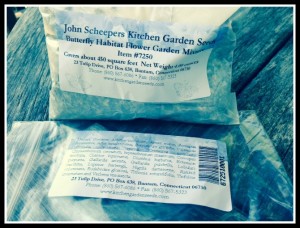 Accordingly, I looked for a package of seed that met our needs. I wound up purchasing a “Butterfly Habitat” seed package from John Scheepers Kitchen Garden Seeds for $12.50. The seeds were organic, and the package promised to cover 450 square feet, just about the size of the area we had in mind.
Accordingly, I looked for a package of seed that met our needs. I wound up purchasing a “Butterfly Habitat” seed package from John Scheepers Kitchen Garden Seeds for $12.50. The seeds were organic, and the package promised to cover 450 square feet, just about the size of the area we had in mind.
I read the label to see what flowers were included, but as the plants were all identified by their Latin names (not my forte), I remained unsure. However, I did recognize echinacea, rudbeckia, and coreopsis, among about 20 other varieties.
The directions on the package called for a light preparation of the soil, which was pretty easy in our case. Since we had used the plot last year for vegetables, all we had to do was lightly weed the area. Then the directions suggested mixing the seeds with sand, in a ration of 10 parts sand to one part seeds. How exactly were we to do this?
My husband came up with a simple solution. He took a leftover seedling tray with 10 compartments. He filled these up with sand from a bag we purchased at Home Depot, and then dumped them into a bucket. Then he filled one of the compartments with seed and dumped that in. He repeated that process four times, and voila! we had our sand and seed mixture.
The next step was to divide both the plot and the seeds into equal portions. We once again used our leftover pots — eight of them — to divide the seed-sand mixture into equal portions. We used leftover plastic molding to divide the plot into eight portions also.
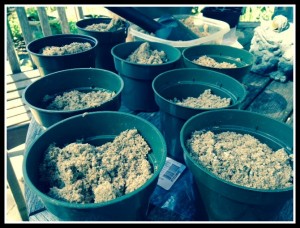 Now the job was simply to sow the seed, one pot per each plot portion.
Now the job was simply to sow the seed, one pot per each plot portion.
This was followed by a light raking, and a gentle watering.
The finished project, shown below, isn’t much to look at right now. But it is filled with hope and expectation — for beautiful flowers, as well as more butterflies, bees, and hummingbirds. We also feel good that we have taken an important step toward making our garden a place even more attractive to wildlife than it already is. Altogether, the cost was next to nothing, and the labor was mostly fun.
Our dog, Nestle, approves.
Like this post? Sign up to receive an email each time a new post is available. We will never loan, sell or rent your email address — that’s a promise! Please use the buttons below to share with others.
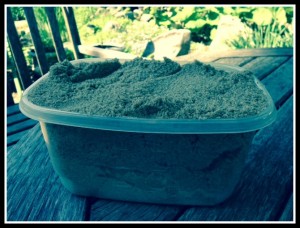
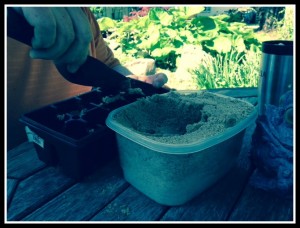
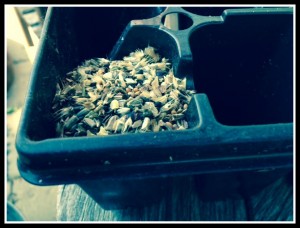
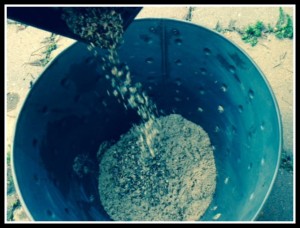
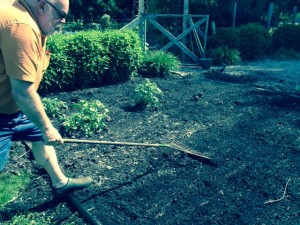
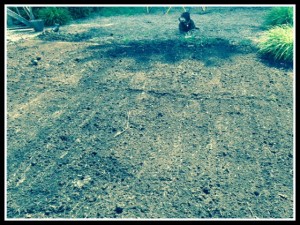
This is exciting! Can’t wait to see how it looks in a few months!!
such a great way to do it!